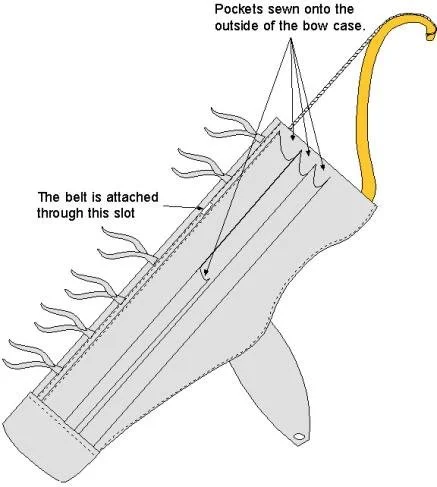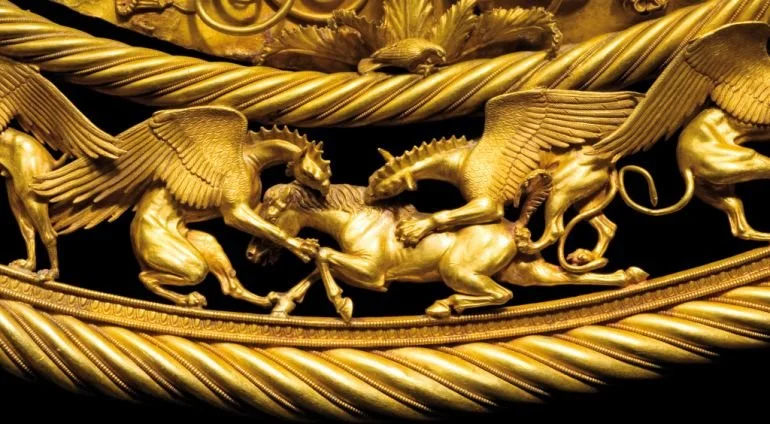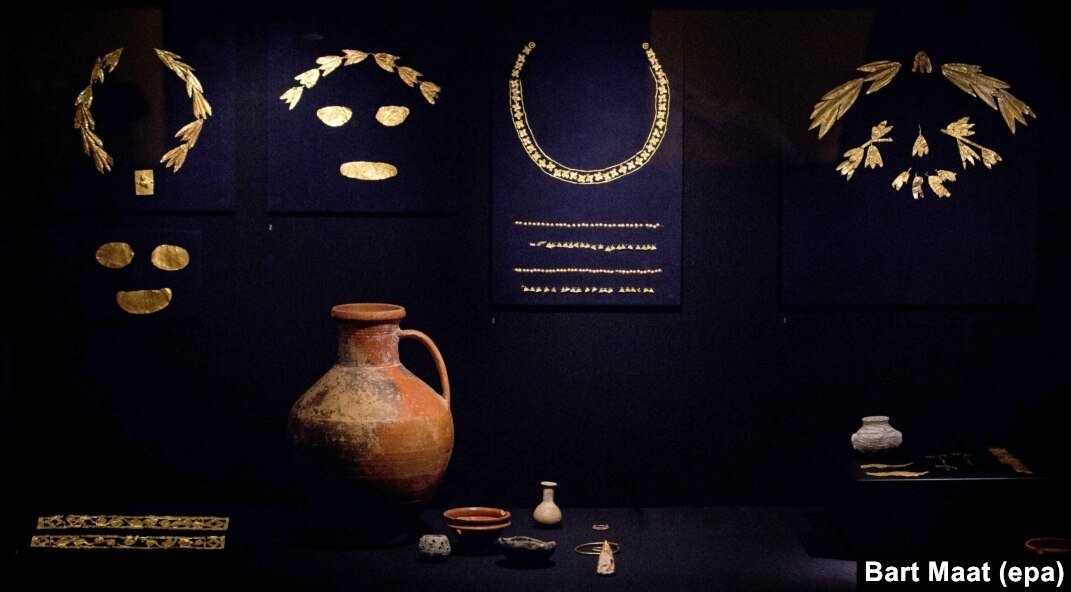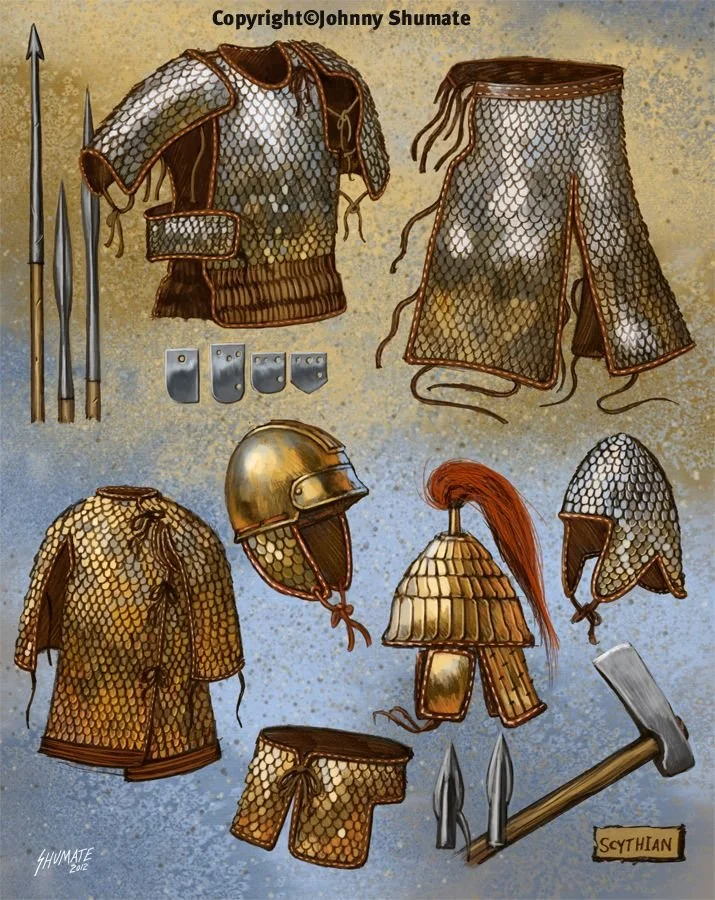
Material Culture
The Scythians were incredibly skilled artisans, particularly in the field of metalworking. Their goldsmithing skill produced some of the most beautifully detailed works of the time period, which I have included below for your viewing. Because the Scythians lacked a written language, much of what we know of them comes from their material culture, which has been remarkably well preserved, with tens of thousands of pieces being recovered in their former territory, particularly from Kurgan burial mounds (3). To this end, much of what is recovered is viewed from a funerary perspective and their importance in ceremonial traditions, and less so their prevalence in everyday life (3). Regardless, the findings have shown that Scythians were extremely proficient and skilled goldsmiths, despite being an ancient nomadic people with limited technology. A Kurgan excavated in Siberia from 2000-2003 was dated to the 7th century BCE and thousands of gold artifacts were excavated from the Kurgans royal chambers (3). Analysis of the artifacts within showed that the Scythians utilized different sophisticated styles and techniques to produce almost unparalleled level of detail. They utilized casting, sheet work, engraving and openwork, filigree and granulation, soldering, and enamel in the production of these various pieces (3). While these techniques were utilized in other societies around and before the 7th century BCE as well, it still illustrates the level of skill displayed by a nomadic people.
Archery
The Scythians were some of the greatest archers in the world and were exceptional at shooting from horseback. This could be in part attributed to their unique bow design, the secrets of which have been speculated upon but ultimately lost to time as none survive in a good enough condition to know exactly how they were made. We know that they were composite or reflex bows, but they were much more elastic than any other bow made until modern day (1). It was so elastic that when the bow was slackened, the arms of the bow would spring back into a semi-circular shape (1). According to ethnographic and historical evidence, it would likely take anywhere from five to ten years to produce this type of bow as it used specific and special types of wood alongside horsehair string, held together with a special type of glue/sinew that required long periods of seasoning to work correctly (1). This level of craftsmanship indicates not only the level of skill that the Scythians had, but also the great level of importance that bows and archery had in Scythian society. When analyzing the amount of skill and time that went into creating bows and their importance to Scythian life, we can assume that the bow and archery was an integral part of Scythian folklore in the academic sense (2). That is to say that while the techniques that went into their creation can be counted as part of their cultural practices, but their importance in everyday life and the techniques of their use that Scythians shared amongst each other would be counted as part of their folklore (2).
(Below Left image: Recreation of a Scythian bow by Jason Beever)
(Below Right Image: A Scythian ‘Gorytos.’ The Gorytos was a type of quiver that held both the entire bow and arrows in it. Generally Scythians would carry additional arrow quivers as the Gorytos did not hold that many.)
(1) Rolle, Renate. The World of the Scythians. London: B.T. Batsford, 1989.
(2) Sims, Martha C., and Martine Stephens. “Ritual.” Essay. In Living Folklore: An Introduction to the Study of People and Their Traditions, 2nd ed., 98-104. Logan, UT: Utah State University Press, 2011.
(3) Armbruster, Barbara. “Gold Technology of the Ancient Scythians – Gold from the Kurgan Arzhan 2, Tuva.” ArchéoSciences, no. 33 (2009): 187–93. https://doi.org/10.4000/archeosciences.2193.


















